4 Mobility Drills That Improve Flexibility and Prevent Injury
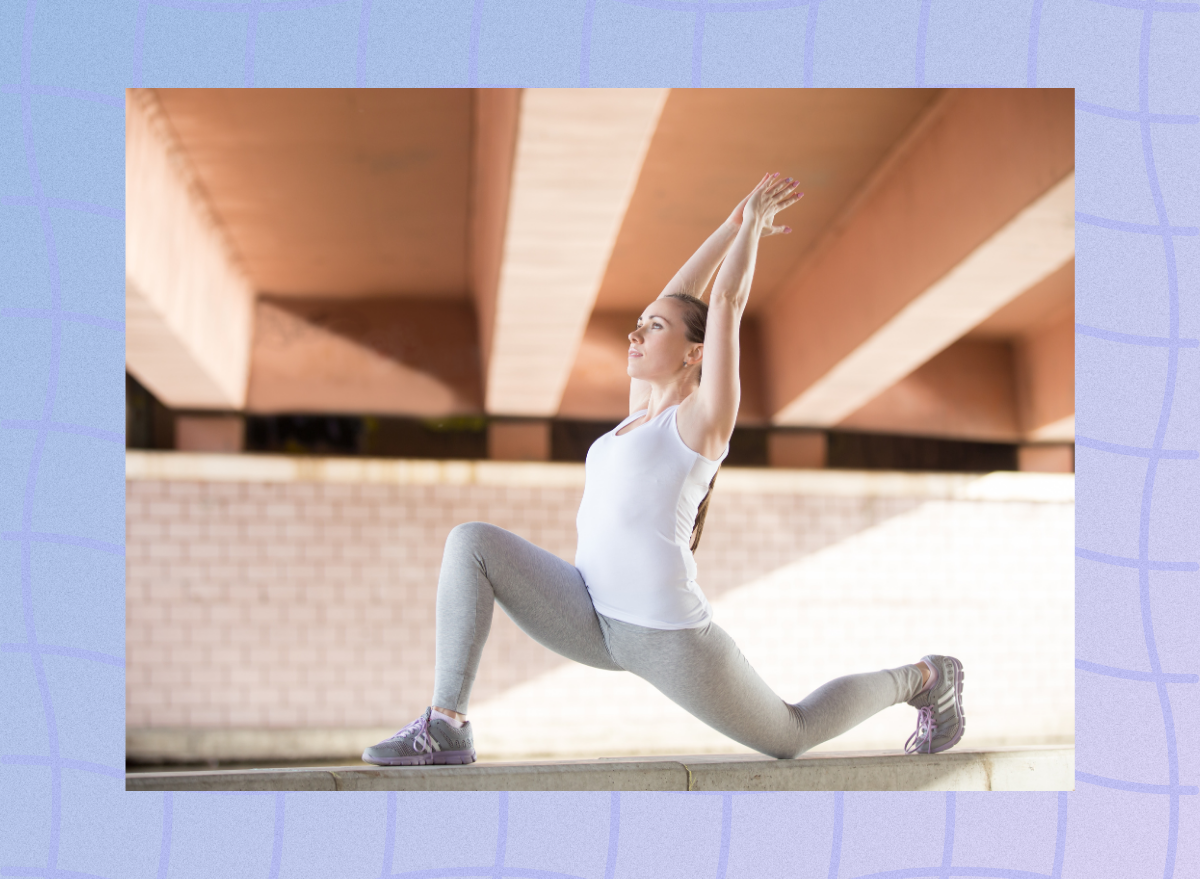
If you want to move better, feel stronger, and avoid injury, mobility training isn’t optional, it’s essential. Unlike static stretching, mobility drills focus on controlled movement through your full range of motion. This unlocks tight joints, wakes up underused muscles, and helps your body function the way it’s meant to.
Better mobility means more than touching your toes or doing a deep squat, it’s about building strength and control at the end ranges of your movement. That translates to more power in your workouts, better posture throughout the day, and less risk of pulling something when life gets unpredictable. Whether you’re lifting, running, or just getting up from a chair, mobility is your secret weapon.
The following four drills target the areas most responsible for limiting movement and causing aches: hips, shoulders, spine, and ankles. Do them daily or use them as a dynamic warm-up before your workouts. Perform each for 45 to 60 seconds per side, moving with intention, not speed. Over time, these small sessions add up to big results.
World’s Greatest Stretch with Rotation
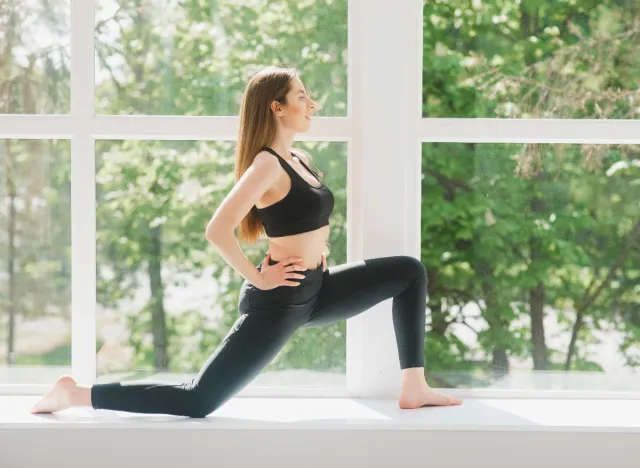
The name says it all. The World’s Greatest Stretch hits nearly every major joint in one fluid motion: hips, thoracic spine, hamstrings, and ankles. The rotation opens up your chest and spine, while the lunge position fires up your hip flexors and glutes. It’s the gold standard for total-body mobility and a must-have in any warm-up or recovery routine.
How to do it:
- Step your right foot forward into a deep lunge, both hands on the ground beside your front foot.
- Keep your back leg straight with your heel lifted.
- Rotate your right arm toward the ceiling, opening your chest toward your front leg.
- Hold for a breath, then return to center and switch sides.
90/90 Hip Switches
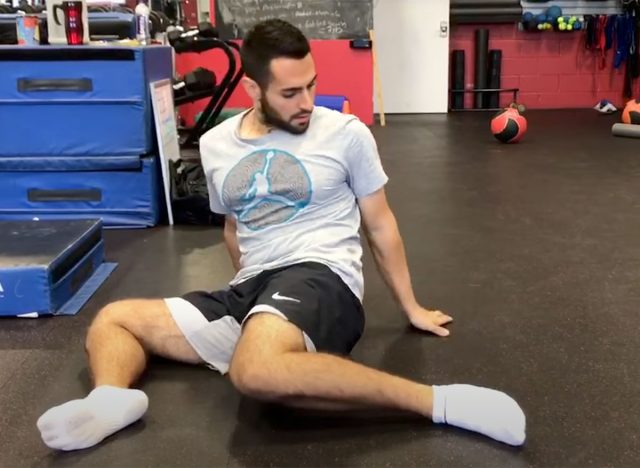
Tight hips limit everything from squats to walking to simply sitting comfortably. The 90/90 hip switch builds internal and external hip rotation, two areas that get neglected in most workouts. Moving back and forth through the 90/90 position increases joint awareness, improves posture, and strengthens the small stabilizers around your pelvis.
How to do it:
- Sit on the floor with your front leg bent at 90 degrees in front of you, and the other bent at 90 degrees to your side.
- Keep your chest tall and your hands on the ground beside you for support.
- Slowly rotate both legs to the other side without lifting your feet.
- Move with control, pausing briefly in each position.
Prone Shoulder Liftoffs
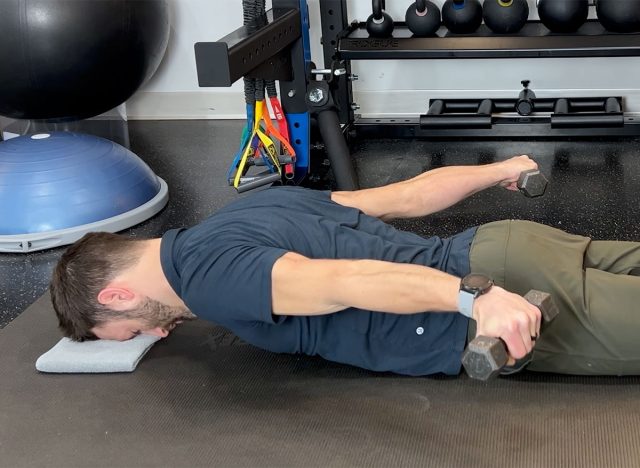
Prone shoulder liftoffs target mobility, especially the ability to extend and rotate the shoulder under tension. Liftoffs strengthen the small muscles that stabilize your shoulder joint, which means better overhead strength and fewer chances of impingement or nagging pain. It’s small, precise, and surprisingly intense when done right.
How to do it:
- Lie face down with arms extended straight out in a Y or W position.
- Keep your forehead down and squeeze your glutes to stabilize your spine.
- Lift your arms slightly off the ground without shrugging or bending at the elbow.
- Hold briefly, then lower with control and repeat.
Ankle Rockbacks
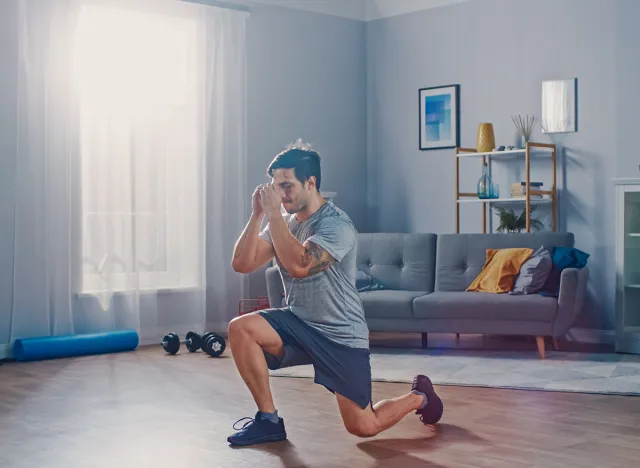
Your ankle mobility directly affects your squat depth, balance, and stride. If you want strong, injury-resistant legs, your ankles need to move well. The ankle rockback improves dorsiflexion, the ability to bring your toes toward your shin, which is critical for knee health and smooth lower-body mechanics.
How to do it:
- Start in a half-kneeling position with your front foot flat and knee bent at 90 degrees.
- Keeping your heel grounded, slowly shift your knee forward over your toes.
- Rock back slightly, then repeat the forward motion.
- Avoid letting your knee cave in or out—track it over the middle of your foot to maintain proper alignment and reduce joint stress.